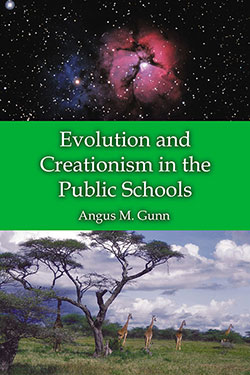Evolution and Creationism in the Public Schools
A Handbook for Educators, Parents and Community Leaders
$35.00
In stock
About the Book
In United States public schools, the content being taught in all subjects is determined by specialists who have the expertise necessary for the task. Parents don’t insist on their opinions being part of curricular decisions. History, mathematics and literature classes, for example, generally enjoy full acceptance by parents and others. The science curriculum, however, is unique in that it has faced long-time opposition that shows little sign of lessening. Most notably, a controversy has arisen around biological evolution.
Part history and part handbook, this carefully neutral work examines the origins of the opposition to biological evolution, its long and deep-seated history, and the reasons why it hasn’t been resolved. Key terms—including creationism, evolution, intelligent design, and theory, among others—are defined at length, and erroneous understandings are addressed. Solutions are suggested so that the energies of school administrators and teachers may focus on their main task, the improvement of learning. State-by-state science standards are covered, and several models for biological science curricula are offered. Presented in a highly readable style, this study is intended for use by students, parents, teachers, school administrators, and community leaders alike, as well as others interested in the controversy.
About the Author(s)
Bibliographic Details
Angus M. Gunn
Format: softcover (6 x 9)
Pages: 199
Bibliographic Info: diagrams, tables, glossary, appendix, bibliography, index
Copyright Date: 2004
pISBN: 978-0-7864-2002-5
eISBN: 978-0-7864-2717-8
Imprint: McFarland
Table of Contents
Acknowledgments vii
List of Figures and Charts xi
Introduction 1
1. Defining Terms 9
2. The Historical Roots of Creationism 35
3. The Impact of Science 61
4. How Do Organisms Evolve? 85
5. Genesis and Science 105
6. Science Standards State by State 125
7. The Evolution of Intelligent Design 145
8. Models of Biological Science Curricula 161
Appendix: Five Common Questions 175
Glossary 177
Bibliography 181
Index 185





